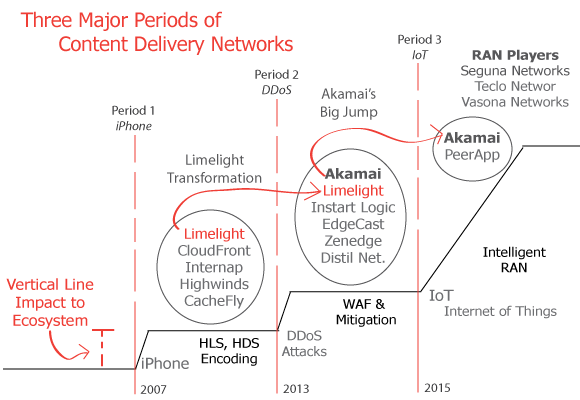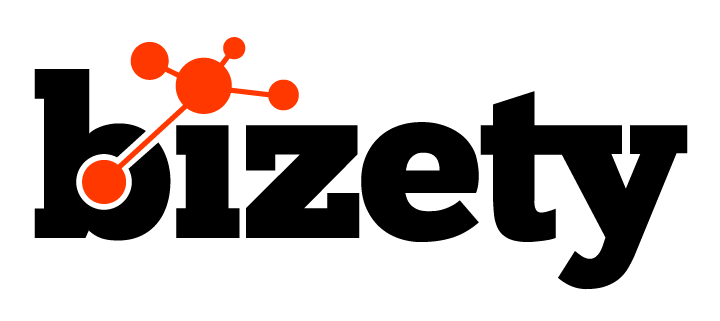The iPhone, DDoS attacks, and Internet of Things are the three biggest disruptions to CDN industry in the last decade. When the iPhone exploded on the scene in 2007, the impact was felt quickly, and CDNs hurriedly updated their platforms to support the HLS format. It was a painful transition, but CDNs accommodated Apple, the king of mobile and their anti-RTMP format, and the CDN video feature set blossomed like never before. The next disruption to impact the sector was the DDoS attack. DDoS attacks have been around for years, but the scale and frequency skyrocketed in 2013, and the CyberSecurity CDN emerged and responded accordingly. CloudFlare was in a good position to profit from this disruptive trend of high-volume and high frequency DDoS attacks, but now many CDNs offer scrubbing center capabilities.
3 Most Disruptive Trends
- iPhone (2007)
- Ermergence of DDoS Attacks (2013)
- Internet of Things (2015)

The third disruption to the Ecosystem is the “Internet of Things”. Cisco calls it the “Internet of Everything” and according to one study, “only about 10 billion of the 1.5 trillion things are connected” and “there are approximately 200 connectable things per person in the world today”. What does that mean for the CDN? It means every CDN must invest in wireless last mile technology, specifically in the RAN, and transform into a Wireless CDN. And we’re not talking about mobile device detection or TCP/IP optimizations outside of the RAN, but optimizations within the RAN. Just like Akamai and PeerApp have integrated RAN technology into their platform, others must do so at some point. The good news is that supporting billions of IoT devices is similar in some ways to small file delivery. On the flip side, CDNs must work more closely with Mobile Operators, which is something they haven’t done much in the past.

